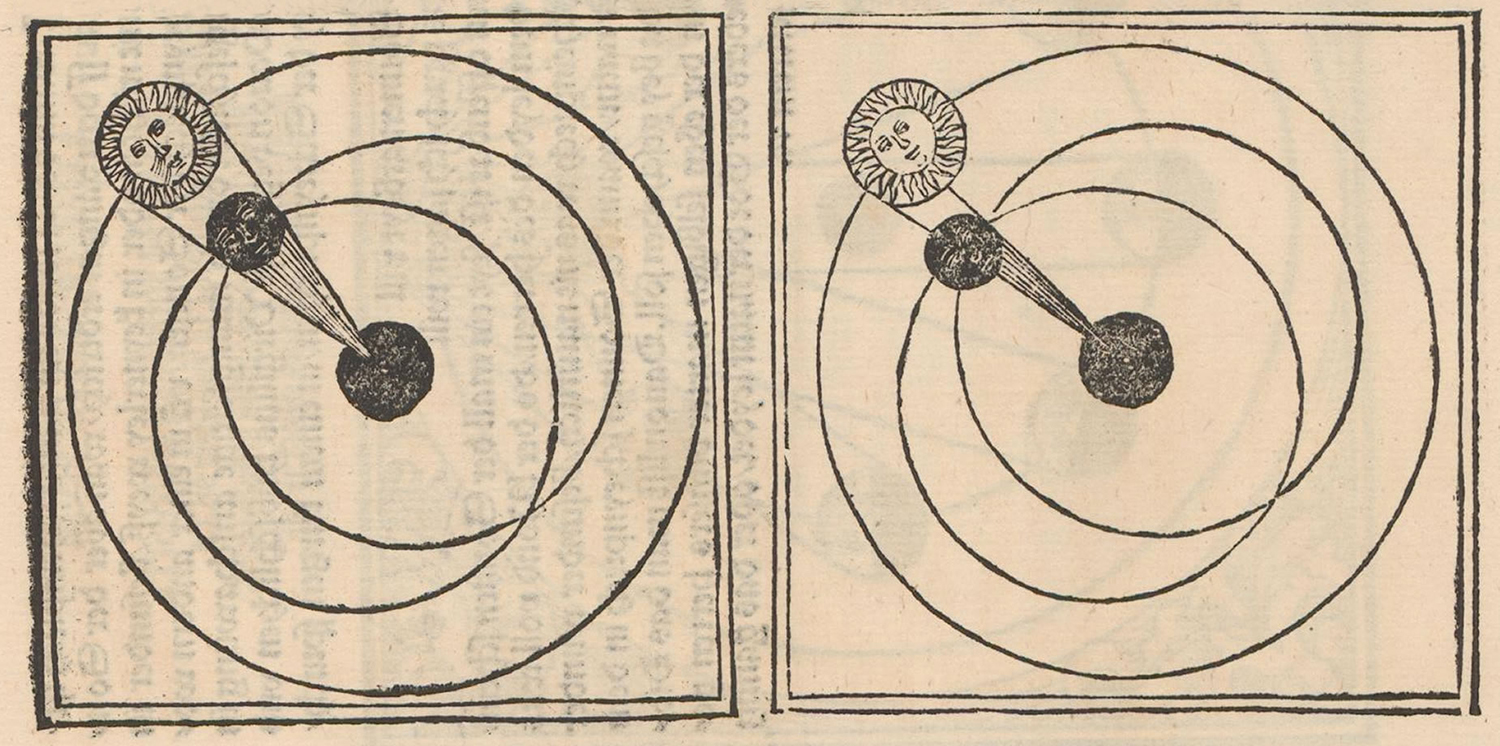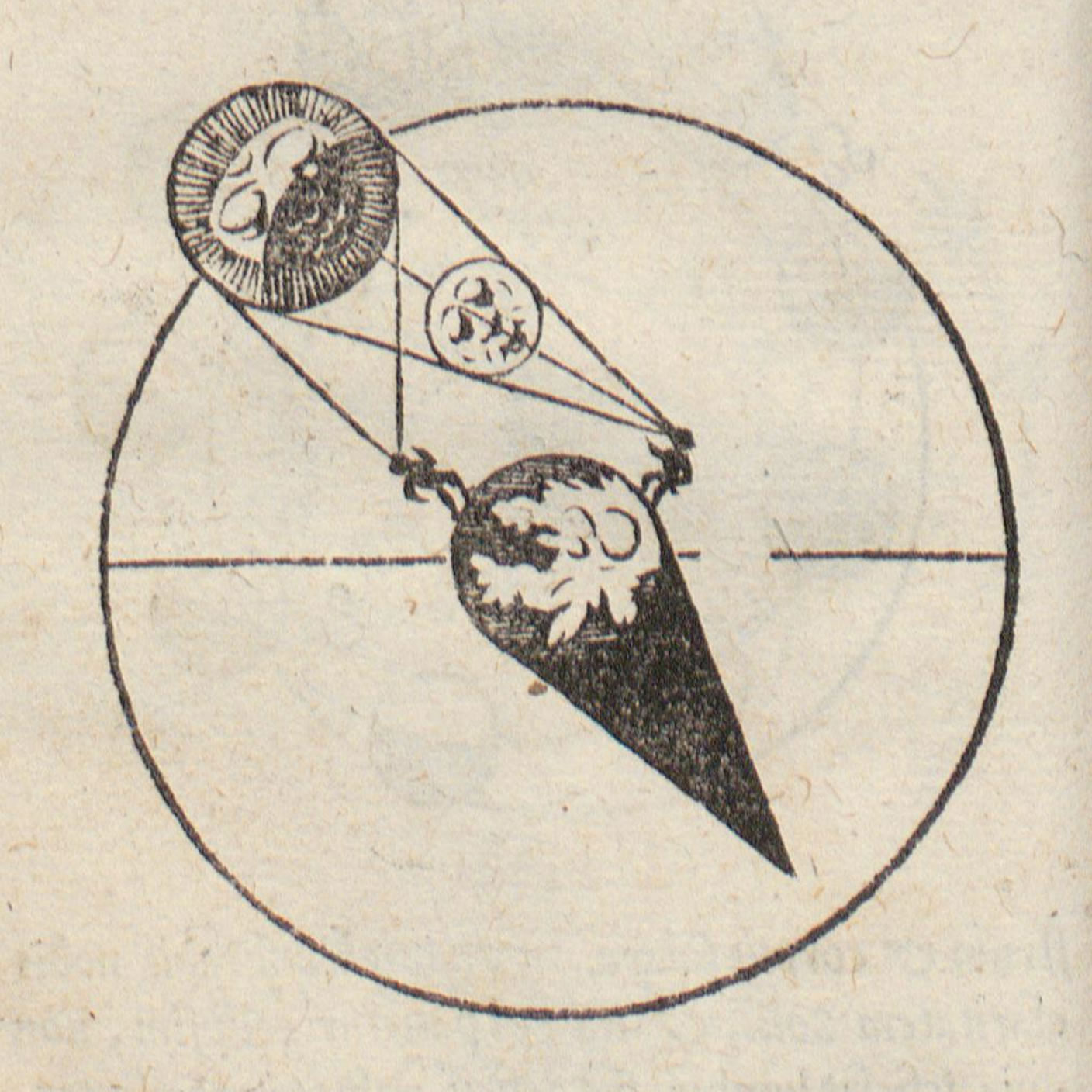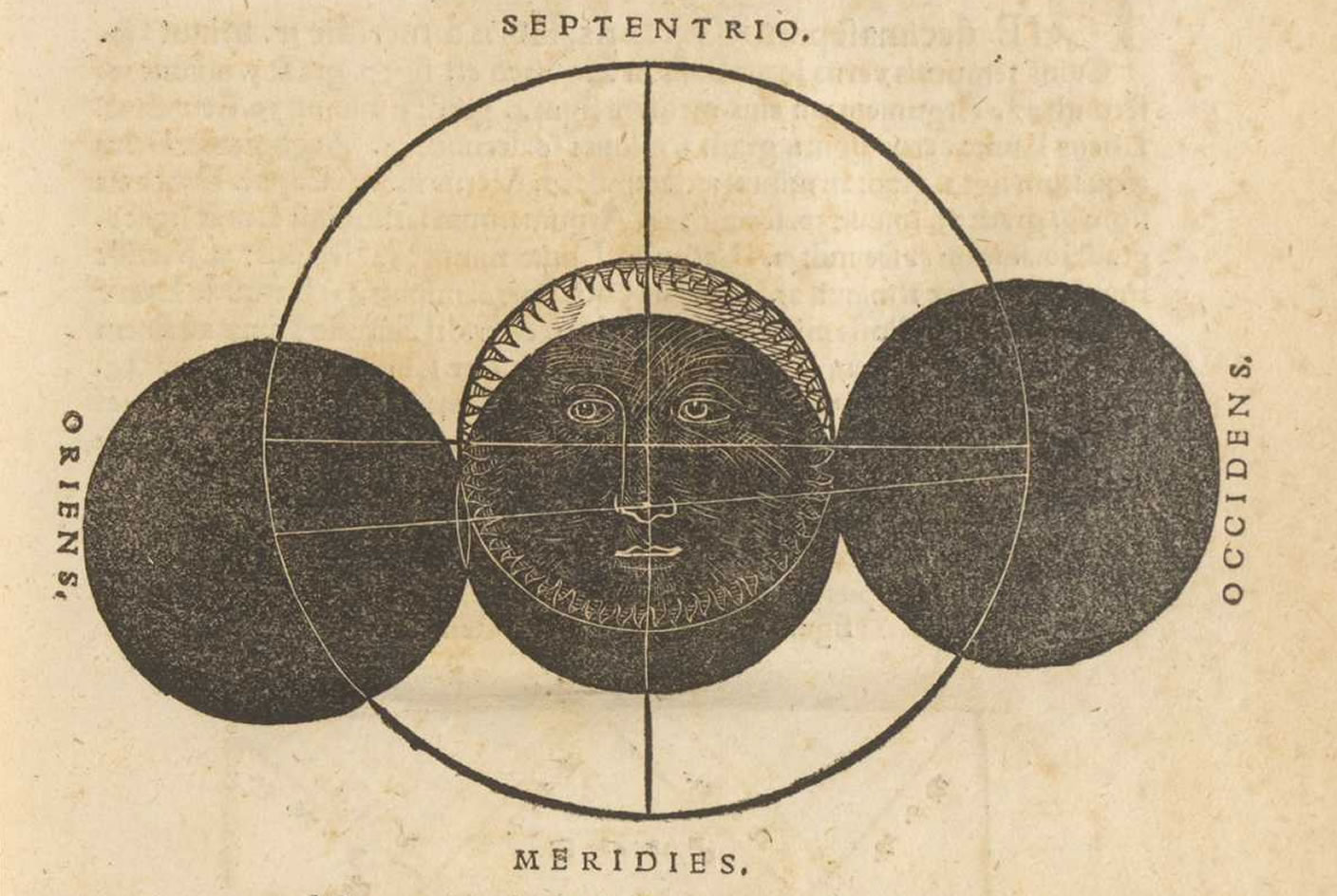The origin of solar eclipses
Solar eclipses can come about during the moon's orbit around the earth: if the moon slides between the sun and the earth, there is a solar eclipse. If the moon's orbit around the earth lay in the same plane as the earth's orbit around the sun, there would be a solar eclipse every orbit, namely at new moon. As the two orbital planes are tilted towards one another, however, eclipses are relatively rare occurrences: on average, there are two solar eclipses per year.
From a single location on earth a total solar eclipse can only be observed on average every 375 years. Total solar eclipses differ in length, depending on the diameters of the sun and the moon currently observable. The maximum theoretical duration of a total solar eclipse for a fixed place on earth is seven minutes and thirty-one seconds.
The first German translation of Sacrobosco's "Sphaera" by Konrad Heinfogel describes how solar eclipses come into being.
A later edition of Sacrobosco's "Sphaera" annotated by Melanchthon explains that a solar eclipse is not visible in the same way everywhere on earth.
The following woodcut also illustrates that a solar eclipse is not visible in the same way everywhere on earth. In this case, the depiction is particularly successful.
The woodcut depicts the first and last contact and the maximum of the eclipse.
The saros
Some civilisations, such as the Chinese, the Babylonians (Chaldeans) and the Egyptians, already acquired the habit of recording episodes in the sky at an early stage. They noticed that solar eclipses only occur at new moon (conjunction), but not at every new moon and not everywhere in the same way. They even found that, after a certain period, the so-called saros of 223 moons or eighteen years and eleven days, every solar eclipse follows a corresponding solar eclipse so that such phenomena recur in a particular sequence and can thus be predicted.



